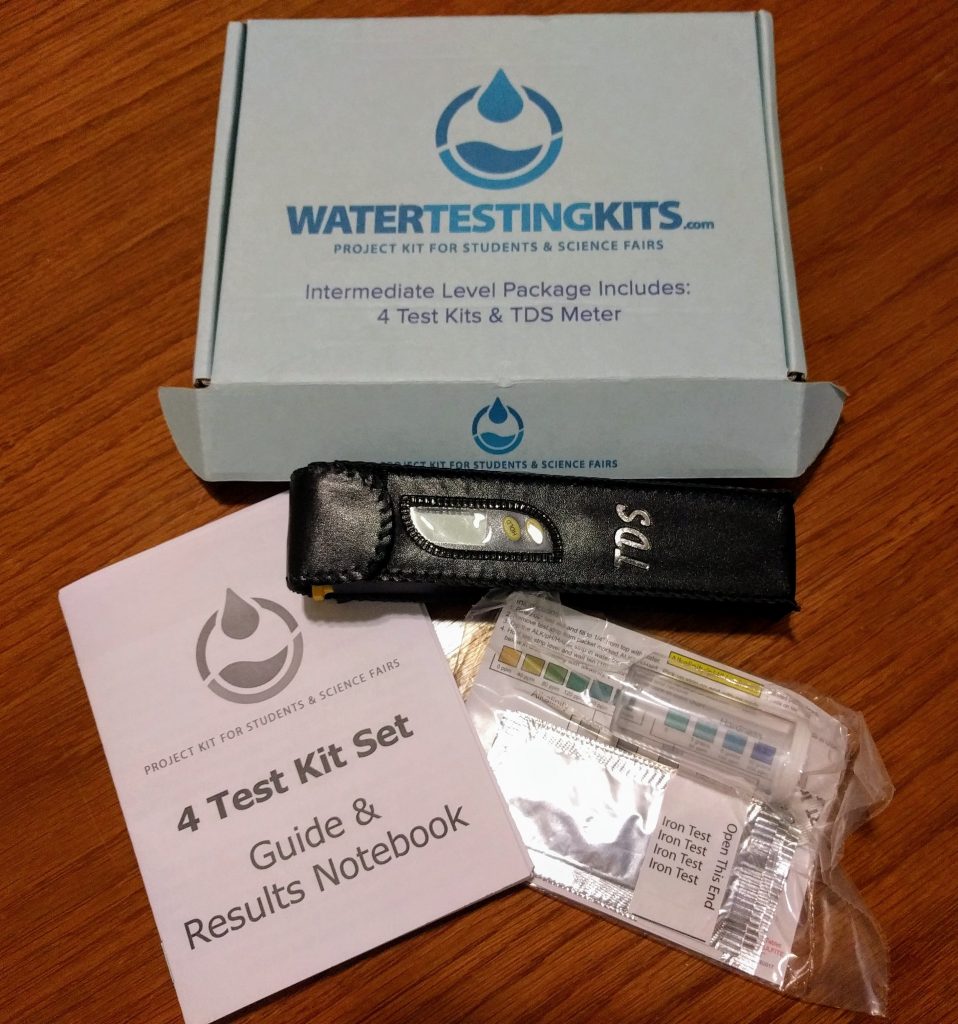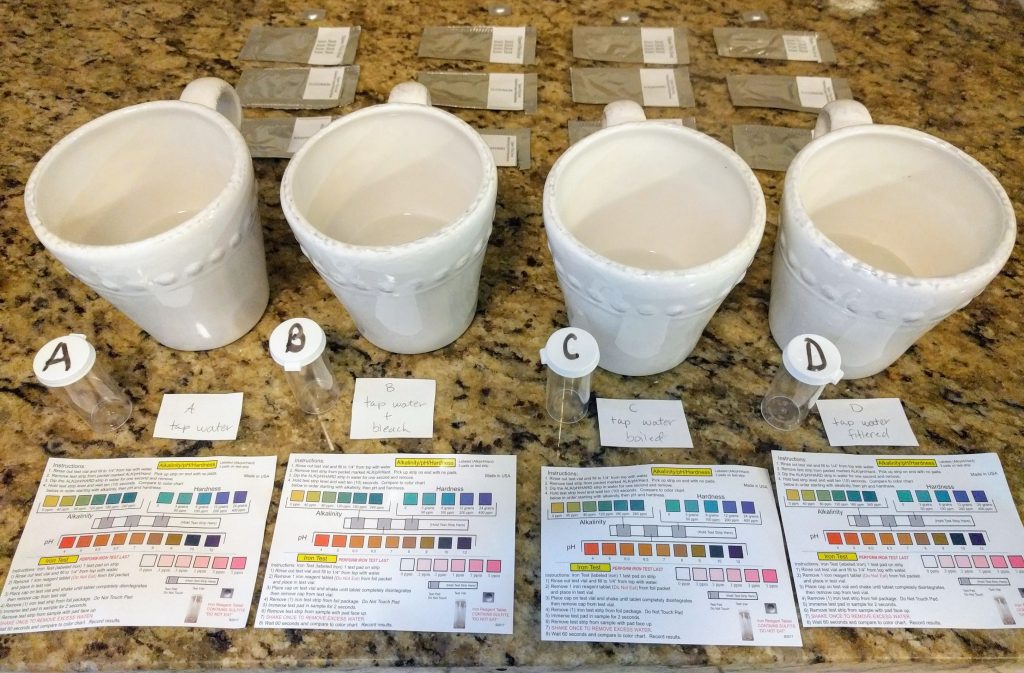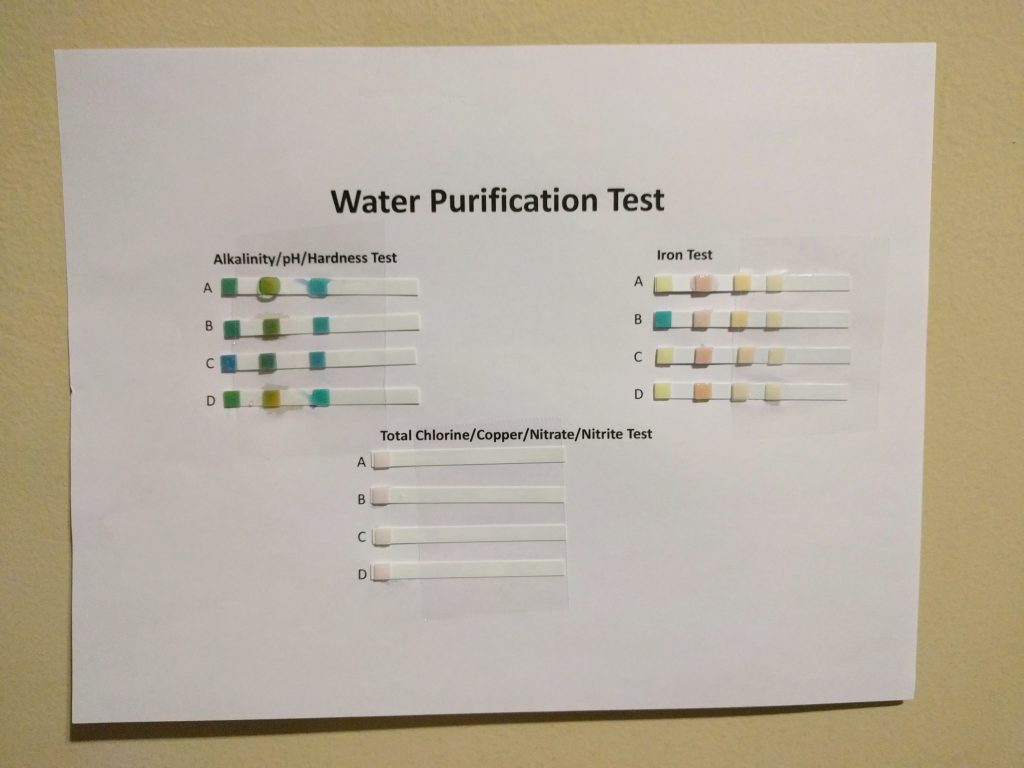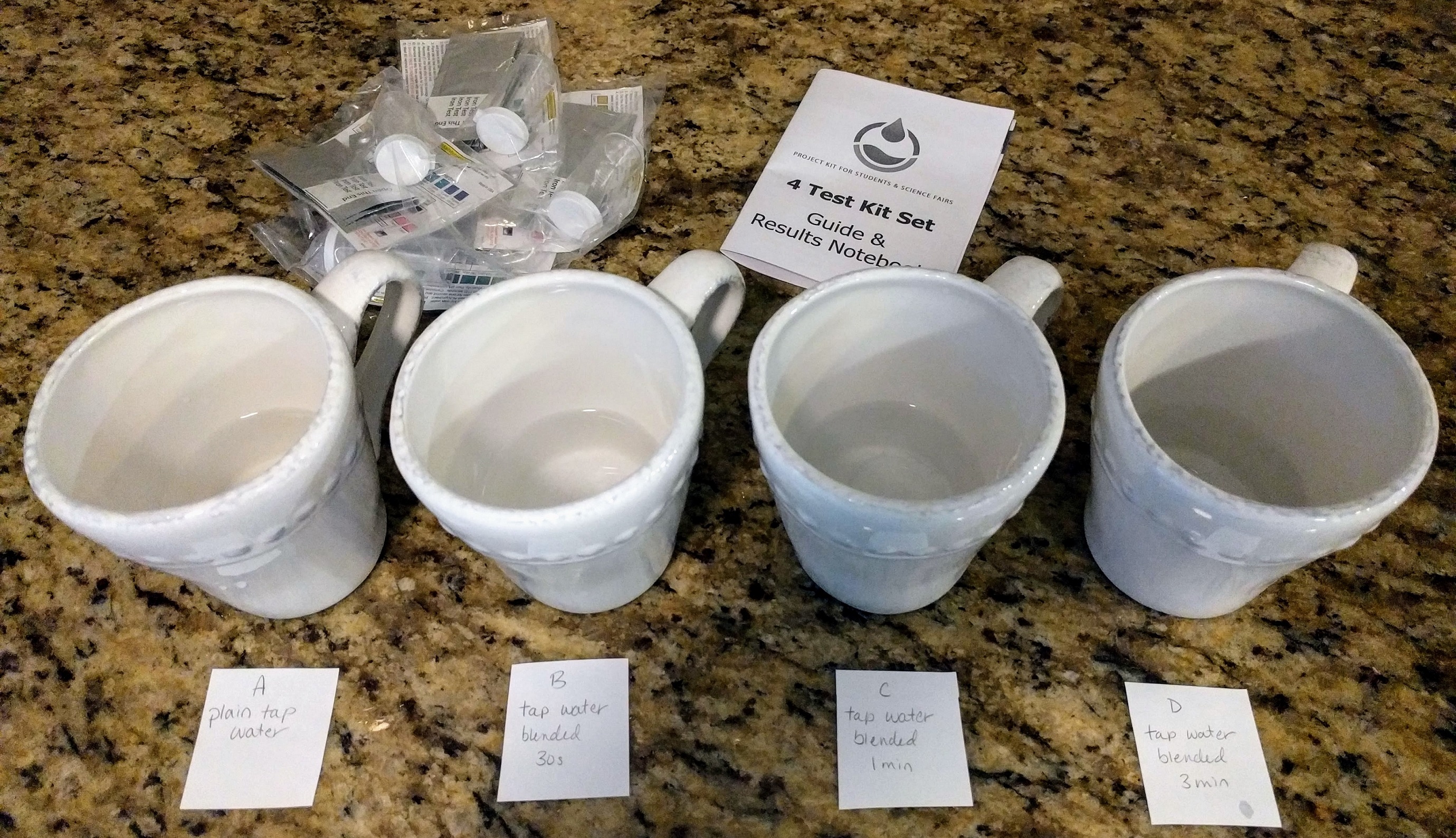If your water was declared unsafe, what would you do? There are many simple methods that can be used to purify water at home, but which one works best? For emergency disinfection, the EPA recommends boiling water for one minute or adding bleach to disinfect your water. In this simple experiment, we used Test Assured’s 4 Test Kit Set for Schools and Science Fairs to test some of the most common methods for improving water quality. This set includes 4 test kits and can be used by children in grades three through twelve to perform science experiments like this one.
Supplies
The first thing you need to do is gather your supplies:
- Test Assured 4 Test Kit Set with TD Meter
- Tap water
- Filtered water
- Bleach
- Blender
- Paper towels

Preparation
Before you start testing, you’ll need to prepare your water samples. For this experiment, you will create four samples:
- ½ cup tap water for your control
- ½ cup tap water with one drop of bleach
- ½ cup tap water boiled for 1 minute and allowed to cool
- ½ cup filtered water

Samples should be placed in a mug or glass to start the experiment. You will be completing the TDS test before pouring samples into the vials.
NOTE: Children should be supervised when using the stove and bleach.
Testing
The first test you want to start with is for total dissolved solids, using the TDS meter. The meter will not fit in the test vials, so it is easier to complete this part of the experiment before transferring your samples to the vials. To perform the TDS test, simply turn on the meter and submerge the prongs in the samples. Rinse the meter with clean water and pat dry between each test. Record your results in the results notebook.
Read the TDS meter carefully. When the composition of the water is drastically changed, it is not unusual to get an extremely high TDS reading. You’ll notice in the picture that when we measured the total dissolved solids in the water with bleach, the reading was “113 x10.” The arrow is pointing to where you will see the “x10” if you have a high reading like ours.

After completing the TDS test, you will need to pour your samples into the vials you labeled. Fill each vial to within a ¼” of the top. Be sure to wipe up any spills, so you don’t contaminate the test strips.
Before you get started with the tests, now is a good time to make some visual observations. If any of the purification methods changed the appearance of a sample, make a note on the last page of the results notebook.
Now you’re ready to get started with the rest of the tests. Follow these instructions to complete the remaining tests.
Alkalinity/pH/Hardness Test
- Remove the test strip from the packet labeled, “ALK/pH/Hard”
- Pick up the strip on the end with no pads
- Dip the strip in the sample for one second and remove
- Hold the test strip level and wait 10 seconds
- Place the strip as shown in the picture and compare to the color chart for alkalinity, pH, and hardness
- Record your results in the results notebook

Total Chlorine/Copper/Nitrate/Nitrite Test
- Remove the test strip from the packet labeled, “CL/CO/NA/NI”
- Pick up the strip on the end with no pads
- Dip the strip in the sample three times and remove – DO NOT SHAKE OFF EXCESS WATER
- Hold the test strip level for 2 seconds
- Place the strip as shown in the picture and compare to the color chart for chlorine and copper
- Wait 45 seconds before reading the results for nitrate and nitrite
- Record your results in the results notebook

Iron Test (Complete this test last)
- Remove one iron reagent tablet from the foil packet and place in test vial (the reagent could alter the results of other tests which is why the iron test is completed last)
- Place the cap on the test vial and shake for approximately one minute, until the tablet is completely dissolved
- Remove the test strip from the packet labeled, “Iron Test”
- Dip the strip in the sample for 2 seconds
- Shake the strip once and wait 60 seconds
- Place the strip as shown in the picture and compare to the color chart for iron
- Record your results in the results notebook

Repeat all three tests for each of your samples.
Results
Now that you have completed each of the four tests on your samples, it’s time to look at your results. Ask yourself these questions:
- Did any of the purification methods change the appearance of the samples?
- Which method altered the water composition most?
- Based on your results, what do you think is the best way to purify water in an emergency situation?
- What results did you find the most surprising?
Record your answers on the “Notes” page. If you are using this as a science fair project, you can arrange the test sticks on a page to create a visual comparison of results from the different purification methods.


